Flower Sea Urchin, Toxopneustes roseus
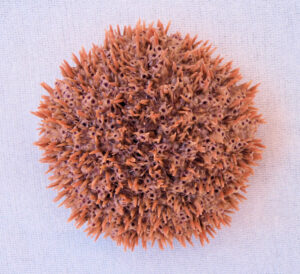 Flower Sea Urchin, Toxopneustes roseus. Urchin collected at Km 17, El Tule, Baja California Sur, February 2011. Size: 8.0 cm (3.15 inches).
Flower Sea Urchin, Toxopneustes roseus. Urchin collected at Km 17, El Tule, Baja California Sur, February 2011. Size: 8.0 cm (3.15 inches).
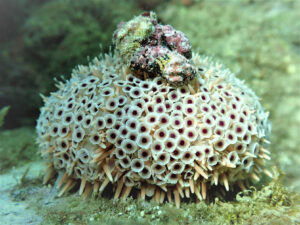 Flower Sea Urchin, Toxopneustes roseus. Underwater photograph taken in Zihuatanejo Bay, Guerrero, March 2018. Photograph courtesy of Maude Jette, Dive Zihuantanejo, www.Divezihuantanejo.com.
Flower Sea Urchin, Toxopneustes roseus. Underwater photograph taken in Zihuatanejo Bay, Guerrero, March 2018. Photograph courtesy of Maude Jette, Dive Zihuantanejo, www.Divezihuantanejo.com.
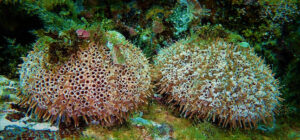 Flower Sea Urchin, Toxopneustes roseus. Underwater photograph taken in Zihuatanejo Bay, Guerrero, February 2022. Photograph and identification courtesy of Ron Woheau, Zihuatanejo.
Flower Sea Urchin, Toxopneustes roseus. Underwater photograph taken in Zihuatanejo Bay, Guerrero, February 2022. Photograph and identification courtesy of Ron Woheau, Zihuatanejo.
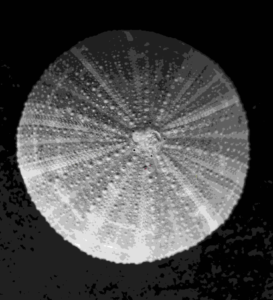
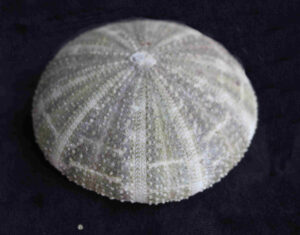
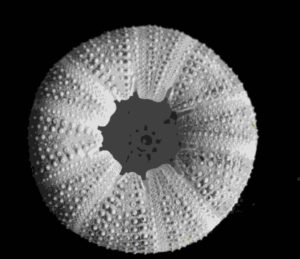 Flower Sea Urchin, Toxopneustes roseus. Urchin collected off the beach at Agua Verde, Baja California Sur, February 2019. Size: 9.5 cm (3.75 inches) x 3.8 cm (1.5 inches). Collection and photographs courtesy of Barry Mastro, Escondido, California.
Flower Sea Urchin, Toxopneustes roseus. Urchin collected off the beach at Agua Verde, Baja California Sur, February 2019. Size: 9.5 cm (3.75 inches) x 3.8 cm (1.5 inches). Collection and photographs courtesy of Barry Mastro, Escondido, California.
Phylogeny: The Flower Sea Urchin, Toxopneustes roseus, (A. Agassiz, 1863) is a member of the Toxopneustidae Family of Globular Sea Urchins. The Toxopneustidae Family has thirty-five known member in eleven genera. The Toxopneustes Genus has four members found in the Indo-Pacific Ocean, however, this species is the only one found in Mexican waters. They are also known as the Collector Urchin, Pink Flower Urchin, or Rose Flower Urchin. The Flower Sea Urchin is known in Mexico as erizo florado and erizo merino florcada.
Habitat and Distribution: This sea urchin is found in the low intertidal zone within algae beds, coral reefs, rocky environments, as-well-as sand and mud bottoms from the intertidal zone to depths of 24 m (80 feet). The Flower Sea Urchin can be found in all waters of the Pacific with the exception of Guerrero Negro (Bahia Tortugas), Baja California, and northward along the central and northwest coasts of Baja.
Morphology: The Flower Sea Urchin reach a maximum of 12 cm (4.7 inches) in diameter. They have a rigid globular test with pentaradial symmetry. They are a uniform pink, purple or red in color. The test is covered in distinctive petal shaped pedicellariae (pink, yellow, or white in color with a central purple dot) and very short spines that are often hidden behind the pedicellariae. There are four types of pedicellariae that each possess a specific form and function. The ophicephalous pedicellariae resemble tube feet and are responsible for keeping the outside of the organism clean of algae, encrusting organisms, and other unwanted debris. These pedicellariae, which give rise to their common name, are often held open giving this urchin the appearance of being covered with flowers. The common name “collector urchin” comes from the fact that the majority of these urchins found in the wild are covered with algae and shells and other debris from their surroundings. It is believed that they use this debris as a ballast to prevent being swept away by wave surges while feeding. Their diet consists of algae, organic detritus, and invertebrates.
Synonyms: Boletia picta, Boletia roseus, and Lytechinus roseus.
A Word of Caution! The flower-like pedicellariae of the Flower Sea Urchin are venomous and can deliver painful stings if touched.
There is currently a large commercial trade of photographs of this species.